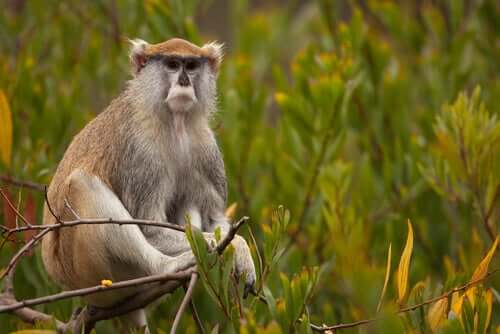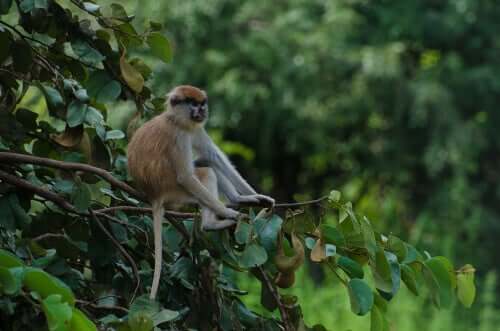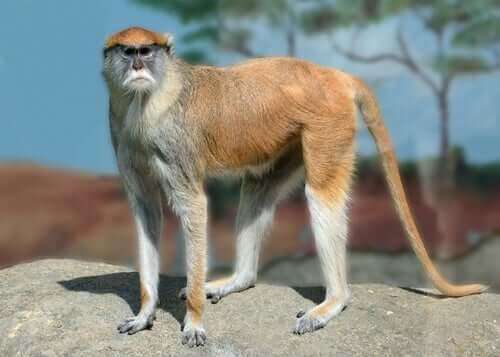The Patas Monkey: Meet This Fascinating Primate

There’s a whole world of biodiversity in the primate group of animals. So, it’s not hard to find fascinating animals you’ve probably never heard of before, and ones that haven’t even been studied much. One of the most interesting of the unknown African primates is the patas monkey.
This species hasn’t been studied much, and lives in a few countries in the south Sahara. Its appearance and biology are extremely odd.
Characteristics of the patas monkey
The patas monkey, like many mammals, has a high level of sexual dimorphism. F or one thing, males are much larger than females, in some cases twice their size. Adult males are an average of 27.3 pounds in weight and 28 inches long, whereas females are an average of just 14.3 pounds and an average of 19 inches long.
The patas monkey also has extremely long limbs, especially compared to other primates. It needs these limbs to reach high running speeds, and is the fastest primate in the world.
As far as their colors go, they tend to have a reddish back and various shades of white along their front. They also have big mustaches (in the case of males) that give them an interesting appearance.

Behavior
The patas monkey is a land-dwelling, diurnal primate. Despite the fact that they’re great climbers, you’ll usually see members of this species on the ground. Because they’re so fast, their primary escape mechanism is to run. Being the fastest primate has helped earn them a slippery reputation, and they can even get away from predators like cheetahs.
Patas monkey groups are usually made up of about 20-50 individuals. They tend to roam within a space of roughly 20 square miles. Patas monkey groups generally involve one male and many females. During the mating season, though, more males will start to join. There are also groups with several males.
This species of primate is omnivorous and relies a lot on acacia trees. They can eat just about any part of the tree, which makes it an important part of their diet. But they can also eat birds, arthropods, and some species of cactus.
This primate species has small incisors. That means that it will tend to avoid large, hard foods and opt for seeds and berries when it can.

Habitat
The patas monkey lives in dry areas, far away from the jungle. It primarily lives on the land, in large acacia savannas and, in some cases, semi-desert regions. Patas monkeys tend to live around sea level, but there have been groups found living 6,500 feet above.
The specific countries this primate inhabits include Senegal, the Central African Republic, Chad, Tanzania, Sudan, the Congo, Uganda, and Kenya.
It’s not an endangered species, and the International Union for Conservation of Nature (IUCN) doesn’t consider it at risk. That being said, its population numbers are dwindling because of a loss of habitat.
There’s also a lot of hunting of this species because they eat agricultural products, and because some believe their meat can cure leprosy. That is obviously not true. The subspecies that lives in Tanzania is the most at-risk of all. Its total population has gone down roughly one-third in the past few decades.
The patas monkey is a fascinating species, and it’s one of the many that most people have never heard of.
All cited sources were thoroughly reviewed by our team to ensure their quality, reliability, currency, and validity. The bibliography of this article was considered reliable and of academic or scientific accuracy.
- Hall, K. R. (1966). Behaviour and ecology of the wild patas monkey, Erythrocebus patas, in Uganda. Journal of Zoology, 148(1), 15-87.
